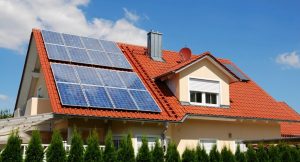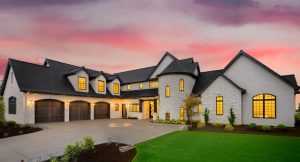Table of Contents
In an era where environmental consciousness is becoming increasingly vital, the housing industry is undergoing a transformative shift towards eco-friendly practices and sustainable living.
Homeowners, architects, and builders are now prioritizing green innovations that not only reduce environmental impact but also promote healthier and more efficient living spaces.
From the integration of renewable energy sources and sustainable building materials to the adoption of smart home technologies and water conservation systems, these new eco-friendly trends are redefining the way we think about our homes.
In this blog, we will explore the latest advancements in green housing, highlighting the benefits and practical applications of these eco-conscious choices.
Whether you’re planning a new build, considering a renovation, or simply looking to make your existing home more sustainable, these trends offer valuable insights into creating a home that is both kind to the planet and tailored to modern living needs.
Join us as we delve into the exciting world of eco-friendly housing and discover how you can contribute to a more sustainable future, one home at a time.
Top 10 Trends in Eco-Friendly Housing
1. Solar Power Integration

Utilizing solar panels and solar roof tiles is a transformative trend in eco-friendly housing that enables homeowners to generate renewable energy directly from sunlight. These technologies convert solar energy into electricity, significantly reducing reliance on traditional power sources like coal and natural gas.
By harnessing the power of the sun, solar panels and tiles can lower utility bills, decrease greenhouse gas emissions, and contribute to a more sustainable energy grid. Additionally, advancements in solar technology have made these systems more efficient and aesthetically pleasing, seamlessly integrating into various architectural styles.
This shift towards solar energy not only promotes environmental sustainability but also offers long-term financial benefits for homeowners.
2. Green Building Materials
Using sustainable, recycled, and non-toxic materials in construction and finishes is a key trend in eco-friendly housing that promotes environmental responsibility and healthier living spaces. Materials like bamboo, which grows rapidly and regenerates quickly, are ideal for flooring and cabinetry.
Reclaimed wood adds character and reduces the demand for new lumber, preserving forests and reducing waste. Low-VOC (volatile organic compound) paints and finishes minimize the release of harmful chemicals, improving indoor air quality and reducing health risks.
These choices not only lessen the environmental impact of homebuilding but also create a safer and more sustainable living environment, aligning with the growing demand for eco-conscious housing solutions.
3. Energy-Efficient Appliances
Installing high-efficiency HVAC systems, water heaters, and kitchen appliances to minimize energy consumption and lower utility bills.
4. Smart Home Technology

Implementing smart thermostats, lighting systems, and energy management tools to optimize energy use and enhance home automation.
5. Water Conservation Systems
It’s going to rain, so why waste it? Incorporating rainwater harvesting, greywater recycling, and low-flow fixtures to reduce water usage and promote sustainable water management.
6. Green Roofs and Walls
Installing vegetation-covered roofs and living walls is an innovative trend in eco-friendly housing that offers multiple environmental and health benefits. These green installations improve insulation by providing a natural barrier against temperature fluctuations, thereby reducing heating and cooling costs.
Additionally, they help mitigate urban heat island effects by absorbing sunlight and lowering surrounding temperatures. Beyond energy efficiency, green roofs and living walls enhance biodiversity by creating habitats for various plant and animal species, contributing to urban ecosystems.
They also improve air quality by filtering pollutants and increase aesthetic appeal, transforming buildings into lush, vibrant spaces. This integration of nature into architecture promotes sustainability and well-being, making it a valuable addition to modern eco-conscious homes.
7. Passive House Design
Designing homes with passive heating and cooling techniques is an essential trend in eco-friendly housing that emphasizes energy efficiency and natural climate control. By strategically orienting a home to maximize sunlight in the winter and shade in the summer, passive solar design can significantly reduce the need for artificial heating and cooling.
Incorporating thermal mass materials, such as concrete or stone, helps to absorb, store, and gradually release heat, maintaining stable indoor temperatures. High levels of insulation in walls, roofs, and floors further prevent heat loss in the winter and keep interiors cool in the summer.
These passive design strategies minimize reliance on mechanical systems, reduce energy consumption, and lower utility bills, all while creating comfortable and sustainable living environments. This approach not only benefits the environment but also enhances the long-term resilience and cost-effectiveness of homes.
8. Net-Zero Homes
Building homes that produce as much energy as they consume involves using renewable energy sources and energy-efficient practices.
These net-zero homes harness solar or wind power and incorporate advanced insulation and efficient appliances, achieving a balance between energy production and consumption while promoting sustainability and reducing utility costs.
9. Sustainable Landscaping

Creating eco-friendly outdoor spaces involves using native plants, xeriscaping, and organic gardening methods. These practices reduce water usage and eliminate the need for chemical inputs, promoting a sustainable and low-maintenance landscape.
This approach not only conserves resources but also supports local biodiversity and creates healthier outdoor environments.
10. Recycling and Waste Reduction
Incorporating built-in recycling centers, composting systems, and construction waste management practices is a forward-thinking approach to minimizing waste generation and promoting recycling efforts in eco-friendly housing.
Built-in recycling centers make it convenient for homeowners to sort and store recyclables, encouraging consistent recycling habits. Composting systems convert kitchen and garden waste into nutrient-rich compost, reducing landfill contributions and enriching soil for gardening.
During construction, waste management practices such as reusing materials, recycling debris, and minimizing packaging waste help reduce the environmental impact of building projects. These integrated strategies collectively foster a culture of sustainability, reduce waste, and contribute to a healthier planet.
These trends reflect a growing commitment to sustainability and environmental stewardship in the housing industry, offering homeowners innovative ways to reduce their ecological footprint while enjoying modern comforts and conveniences.
Are you ready for a home that is both beautiful and eco friendly? You don’t have to choose! If you’re ready for home improvement in Nashville, this list is a fantastic place to start.


